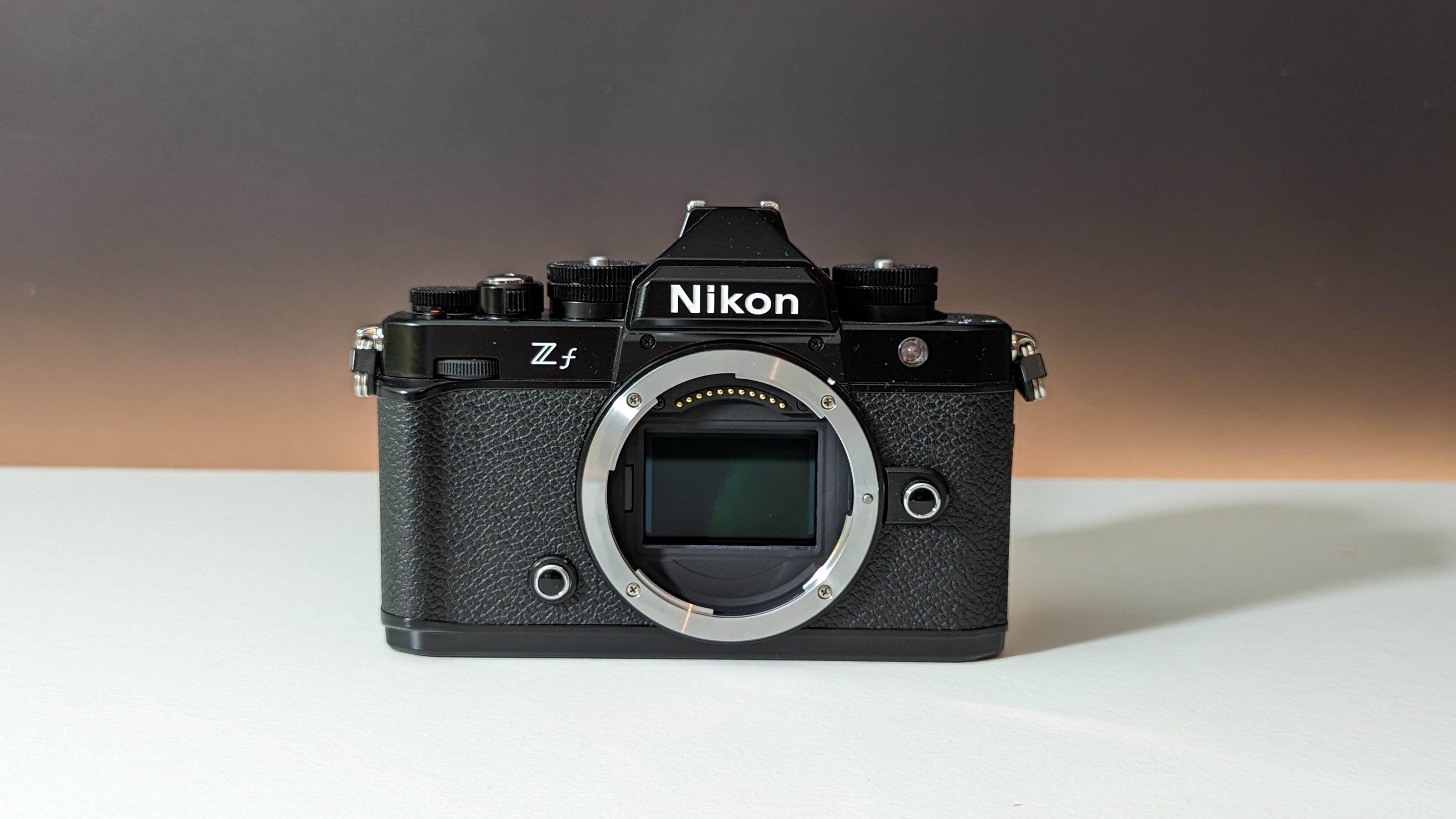Live Science Verdict
The perfect in-between for film fans who want the convenience of a digital mirrorless, this new model from Nikon has all the latest features with gorgeous tactile feedback.
Pros
- +
Dials feel and sound great
- +
Fully articulating touchscreen
- +
Full-frame sensor
- +
Flagship Nikon processing engine
Cons
- -
No screen tilt when tucked
- -
Learning curve for those used to standard mirrorless
- -
Shutter speed dial lock frustrating
- -
Shallow grip can split opinion
Why you can trust Live Science
The Nikon Zf might just be the mirrorless camera you've always dreamt of, if the tactility and aesthetic of a film camera but the convenience and versatility of a digital camera is what you're after.
Myriad retro-looking DSLR and mirrorless cameras are out there on the market, and they appeal to a range of photographers who love the look of the filmic SLRs of the past — but usually, they're compromised on performance and speed through one feature or another. That's not the case with the Zf.
While its 24.5 MP stills and 4K UHD 30p video are nothing to get over-excited about these days, what is impressive is that it sports the same flagship processing engine, the EXPEED 7, as found in the Nikon Z9 and Z8, both absolute powerhouses.
Plus, low light lovers should rejoice because the autofocusing on the Zf sees the accuracy drop down to -10EV. That's the lowest of any Nikon camera, ever, and the lowest we've ever tested here at Live Science.
Nikon Zf review
Nikon Zf: Design


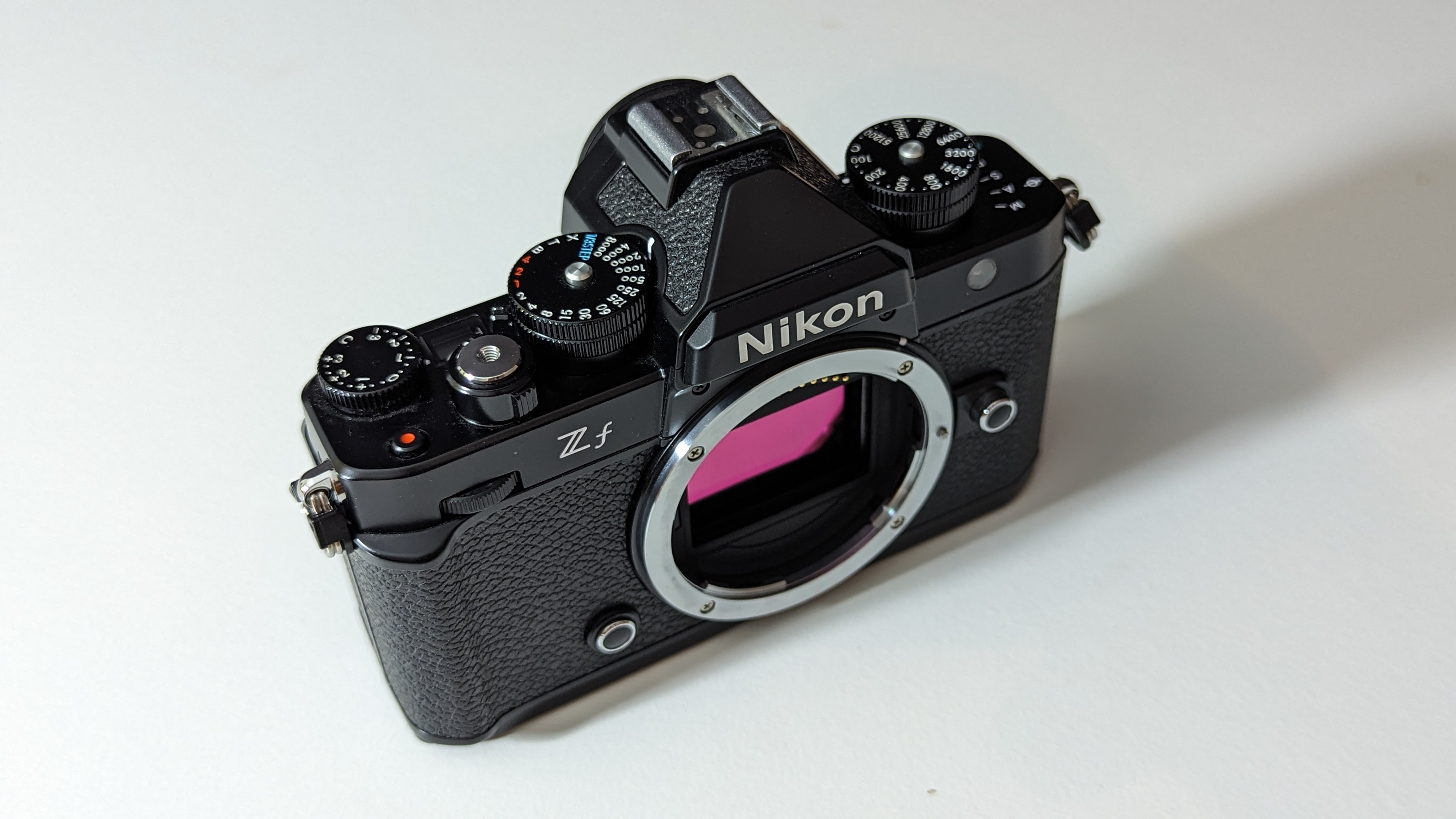
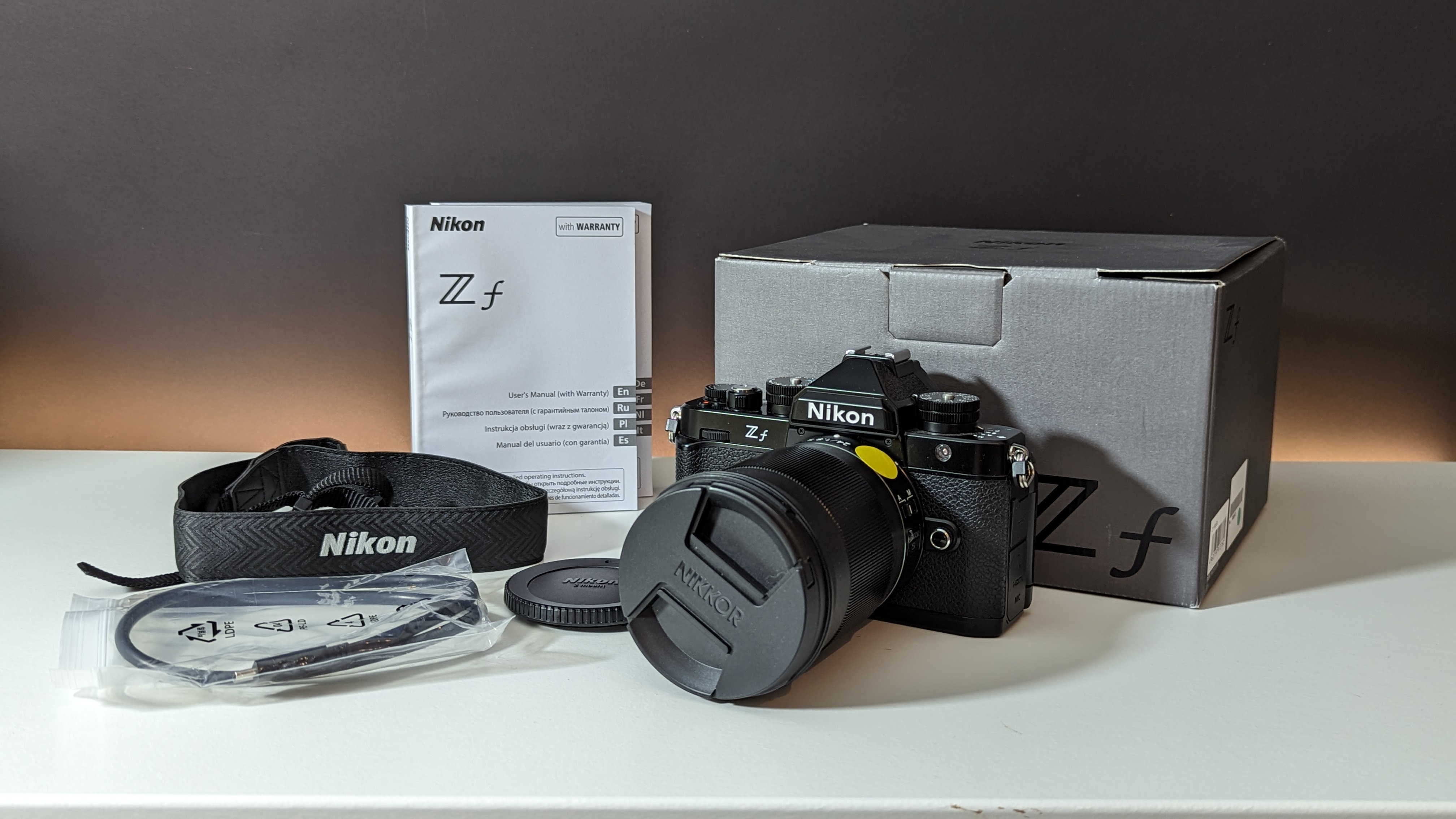
- There's a button and a dial for almost everything we could wish for
- Small details, like a tiny LCD on the top, have been carefully planned out
- Shallow grip is reminiscent of film cameras
Do you want a shutter speed dial? You got it. ISO dial? Yep. Mode selector switch instead of a button? The Zf has that too. There's even a switch to move between stills, video and black & white modes. Each dial and switch gives a satisfying, audible 'clunk' as it's moved back and forth. No cheap, rattly thin plastic and clicks and taps. This sounds deep and solid.
The fact that this camera also has a fully articulating touchscreen means there's more than one way to do the same job. What we love about the dials and button layout is that everything is tactile. Not only does this appeal to the nostalgic photographer but it's actually practical. Muscle memory counts for a heck of a lot when it comes to shooting subjects, and the speed with which you can snap a shot or start recording is sometimes just as important as what settings you have dialed in.
Ever got frustrated with your smartphone when the apps update, change color, log you out and user interfaces move around with each iteration of the software? You won't find that problem with the Nikon Zf, because not only are the dedicated dials and buttons just there, their numbers and letters are etched into them, forever.
Get the world’s most fascinating discoveries delivered straight to your inbox.
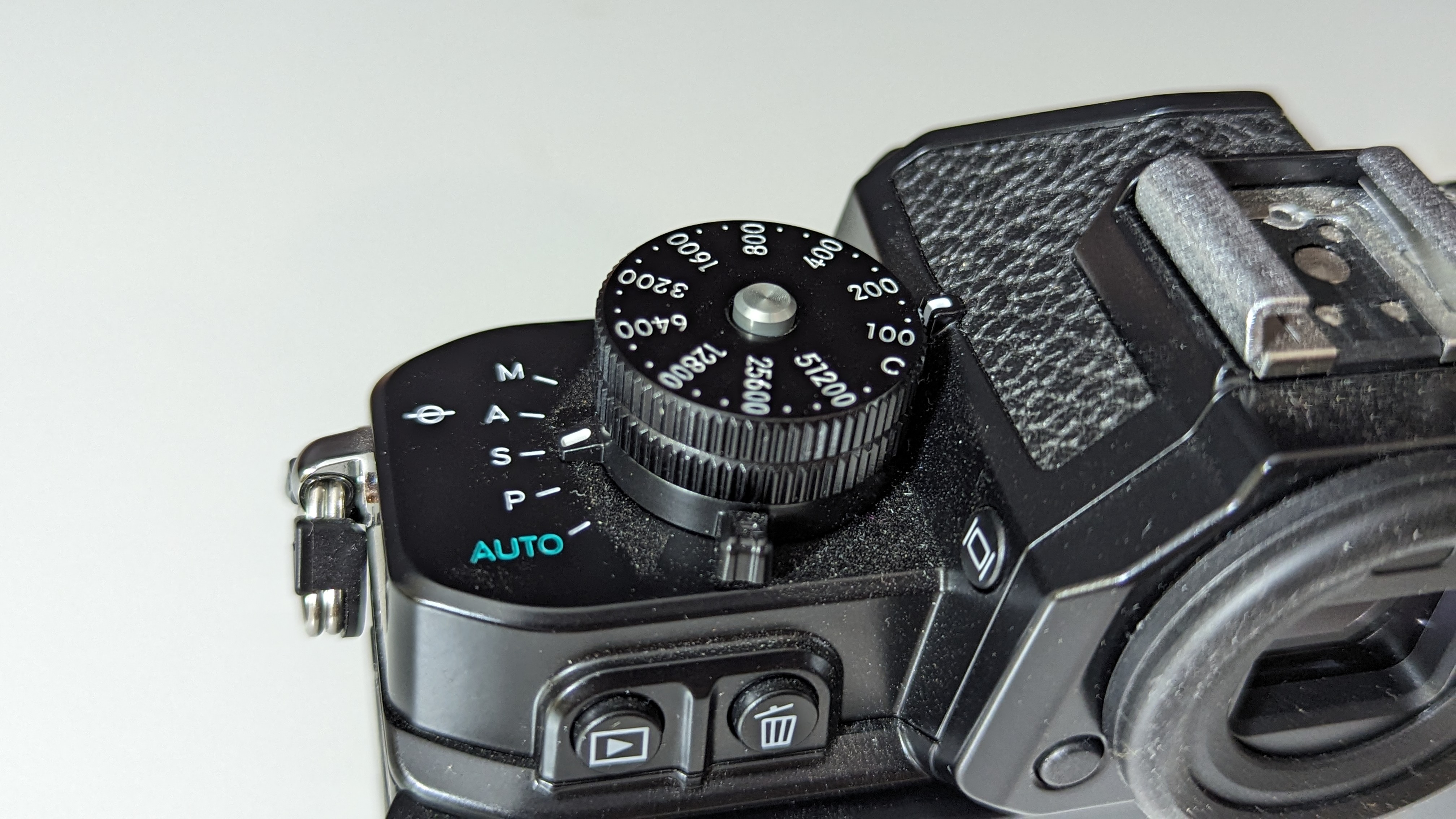

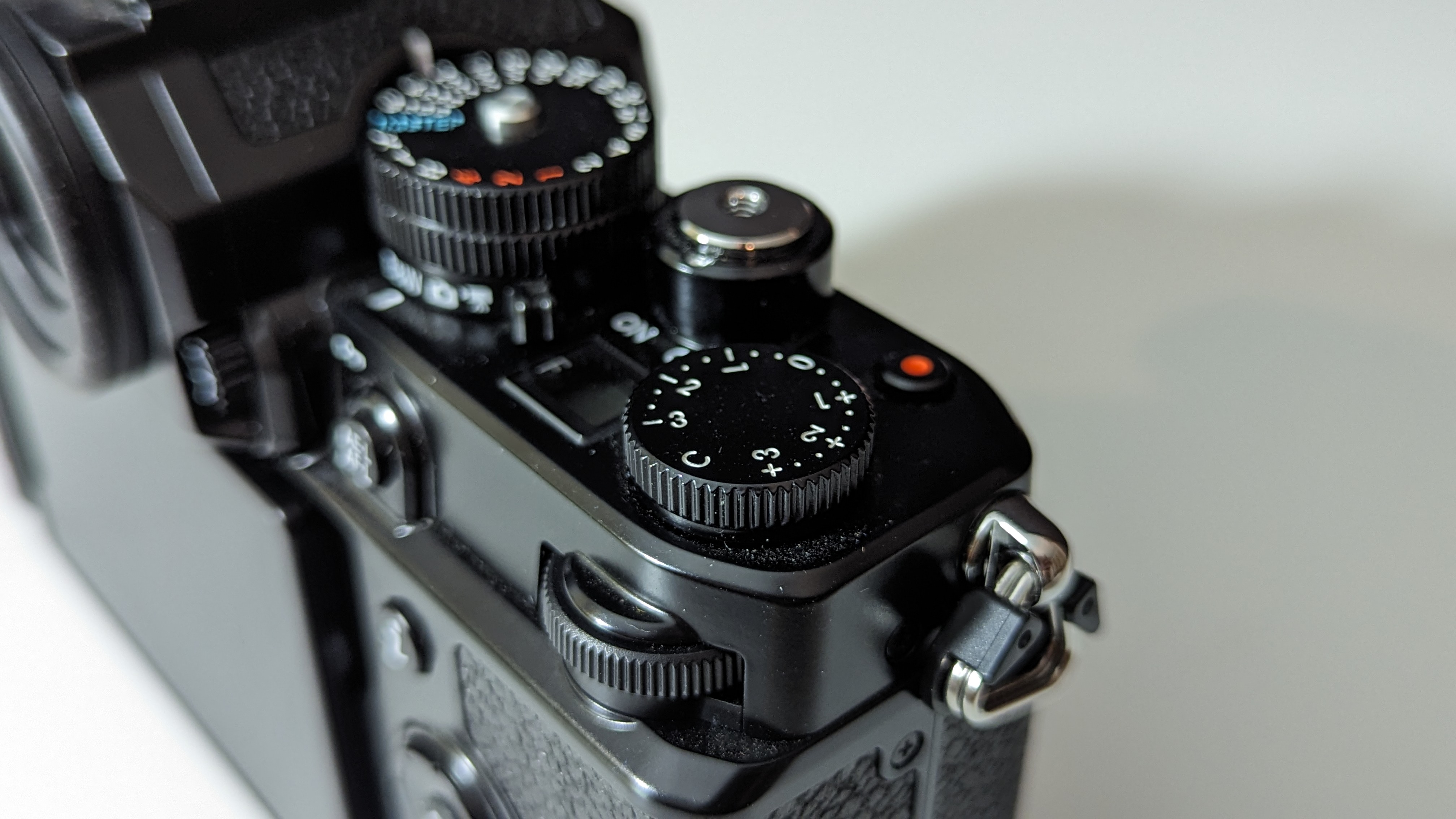
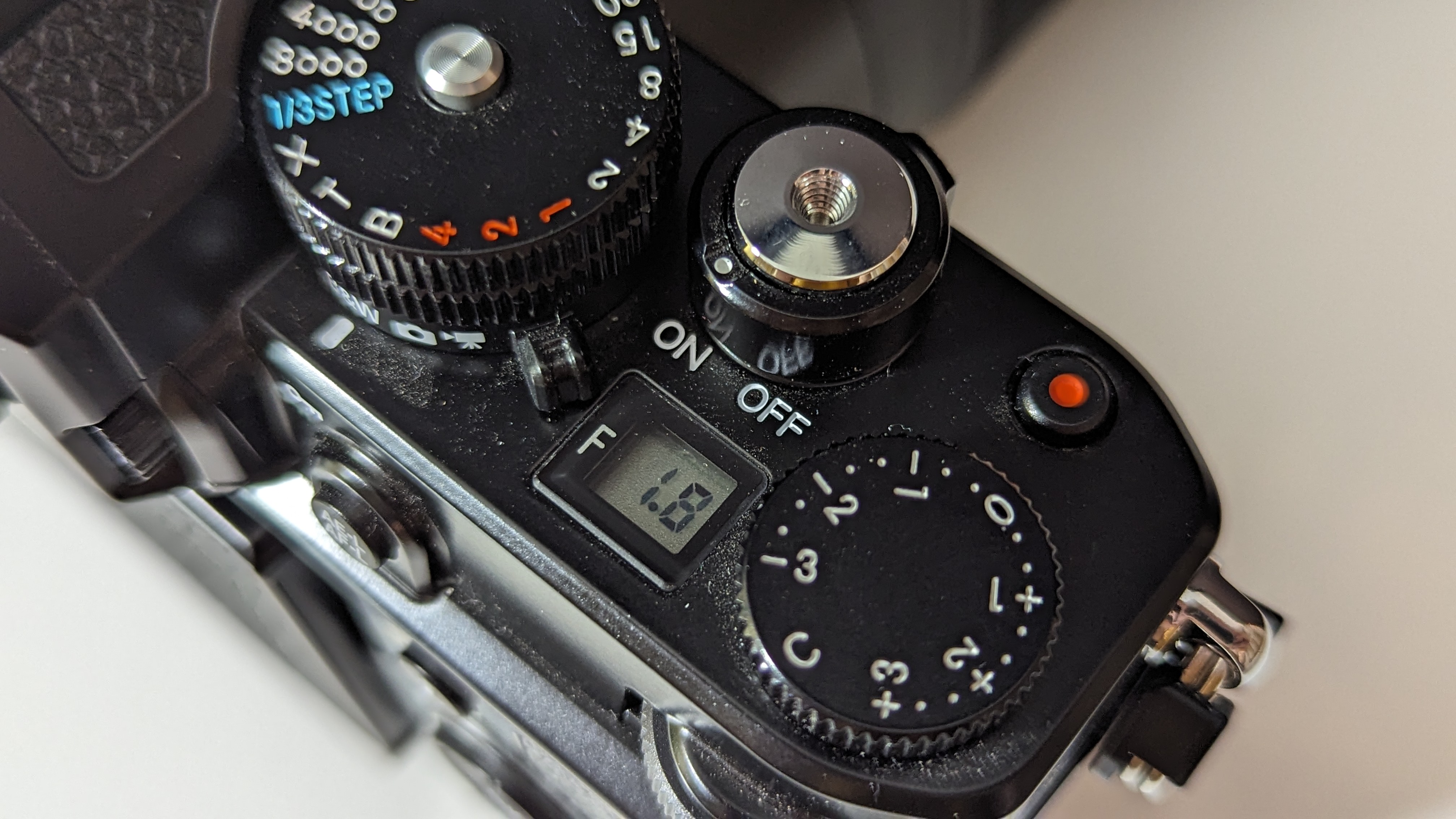
Type: Mirrorless
Sensor: 24.5 MP, full-frame
Lens mount: Nikon Z
ISO range: 100-64,000 (expandable to 204,800)
Viewfinder: Electronic, 3.69m dots
Video capability: 4K 30p / FullHD 120p
Weight: 22.29 oz. (630 g)
Size: 5.7 x 4.1 x 2 inches / 144 mm x 103 mm x 49 mm
Memory card: 1x SD UHS-II, 1x microSD UHS-I
Clad in a beautiful texture that's similar to many vintage SLRs, we think the Zf looks good from any angle. A round viewfinder eyepiece is a nice touch but take a look at the top and you'll spot a teeny, tiny little LCD window. This displays the f/stop that's dialed into the lens. So sweet. So small. So cool!
There's even a threaded connection on the shutter release button which allows photographers to add a soft shutter release button. Some argue that this helps to reduce vibration when pressing the button, which would be useful for low-light shooting where longer shutter speeds capture camera shake blur easier. We didn't test this function ourselves, but the customizability of this is appealing.
Nikon makes its own AR-11 soft shutter release which was originally designed for the Df, but there are many other colors and material types to help the aesthetically-conscious stand out from the crowd.
When it comes to standing out, if you're finding a black camera a little 2022, then pick from the six additional colors the Zf comes in. Blue, red, brown, green, gray and orange (with their own proprietary names) each have unique textures, too.
Nikon Zf: Performance
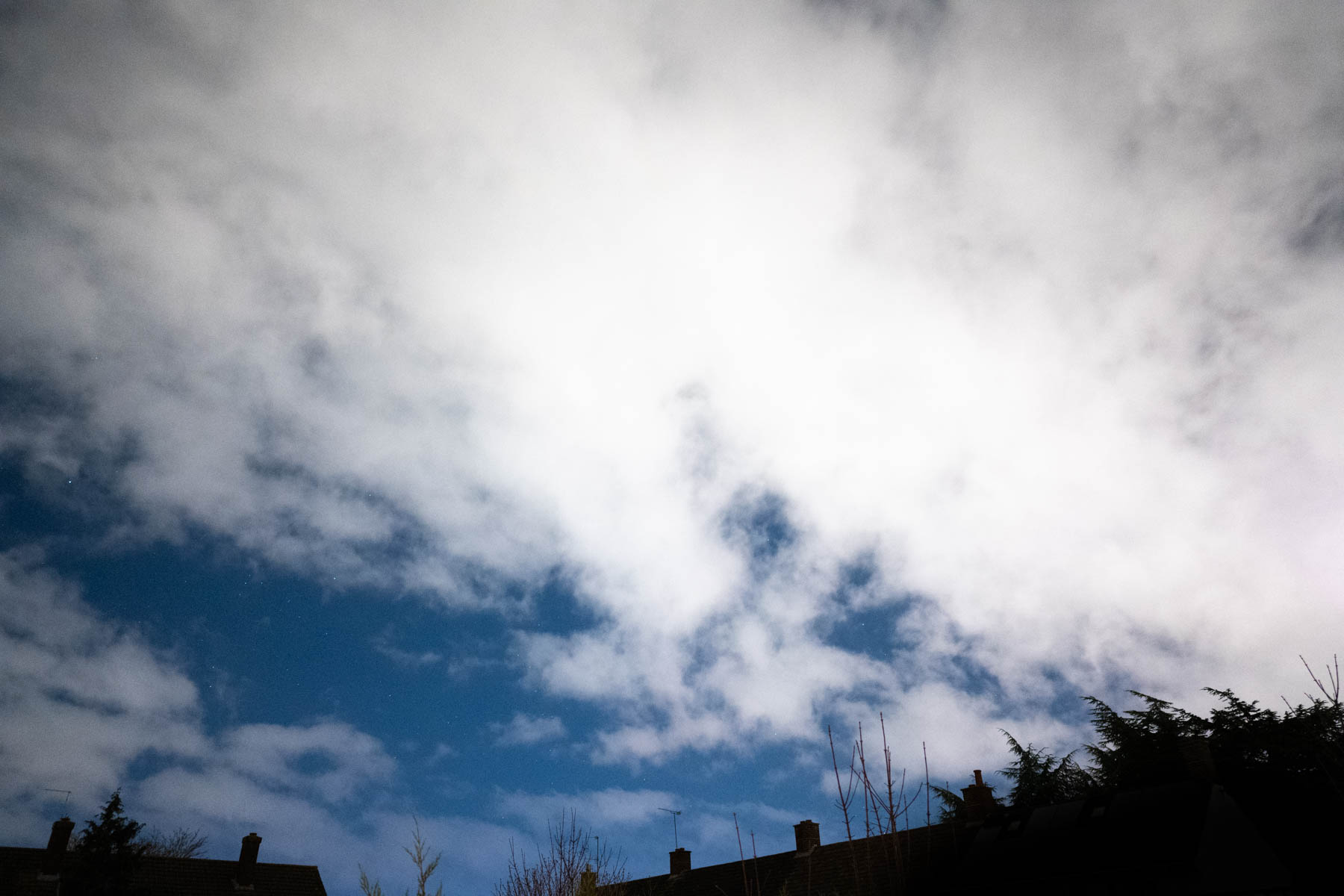
- Autofocusing is speedy and reliable
- Low-light performance is impressive, especially accurate white balance
- 14 FPS mechanical shutter and 30 FPS silent electronic shutter enough for most
The first performance test that really stood out to us was the autofocusing speed and reliability. Almost like a train it'll chug back and forth between subjects without so much as a breath. It does this all, of course, while rattling out up to 14 FPS still photos using the mechanical shutter which carries the same satisfying audible clunks as its dials.
It owes this in part to a combination of its Deep Learning technology — which gives appropriate tracking and subject recognition for people, cats, dogs, birds, bicycles, motorbikes, cars, aircraft and trains — and its ability to autofocus down to -10EV.
Autofocusing down to -10EV might not mean much to the regular user but believe us, it's huge! This refers to the lowest light level at which it can automatically focus on a subject accurately, and this is the lowest of any Nikon ever produced. Even the behemoth Nikon Z8 only steps down to -9EV, and that is jaw-dropping on its own.
Look at our example image above of a silhouetted suburban skyline and you can see that even on this moonless night the camera did an excellent job at latching autofocus onto the contrasted rooftops. It was instant as well: no hunting back and forth, just a straight latch.
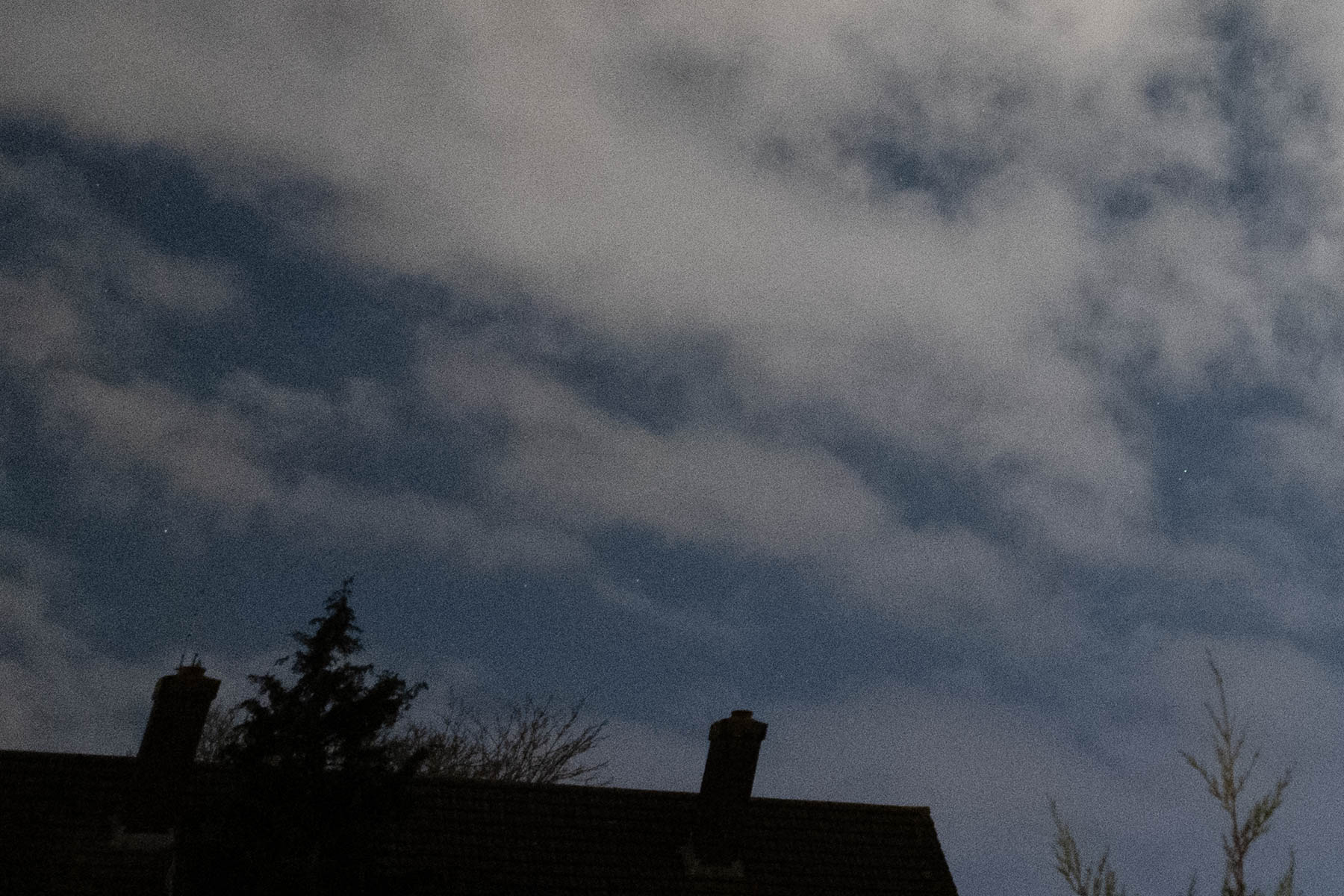
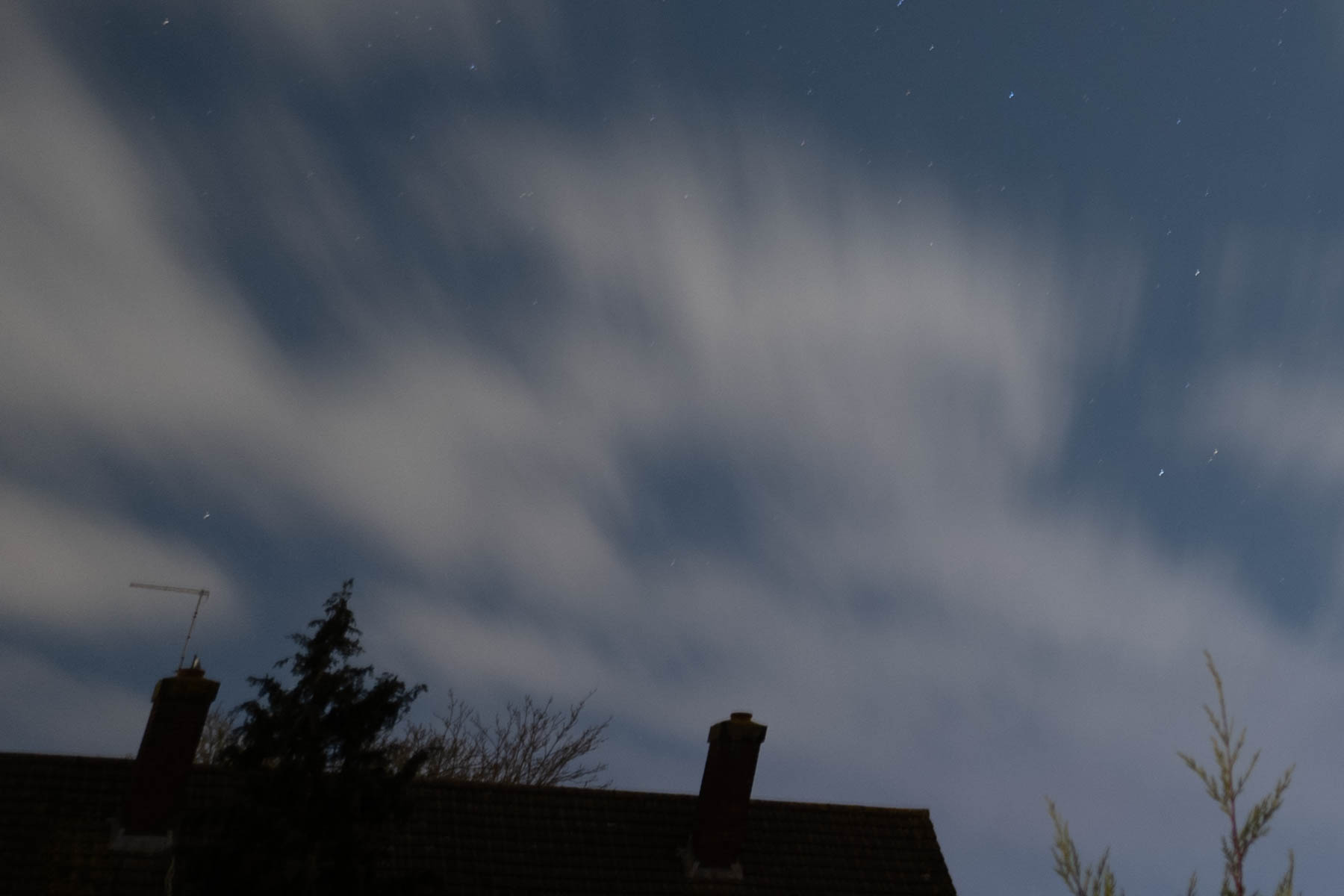
Nikon states that across the ISO range 100-64,000 (expandable to 204,800) is the widest range among Z series cameras. By way of comparison, the Z8 can muster an ISO range of 64-25,600 (expandable to 102,400). We tested the limits of this in some low-light shooting and were impressed with the evenness of the image noise throughout the frame, even at high ISOs into the tens of thousands.
If you're a user that upgrades their camera gear every decade or so, you'll find that the image noise handling of the Zf when set to ISO 8000 is about the same as an equivalent full-frame DSLR set to ISO 1000-1500 from 10 or so years ago.
Take a look at our above example images and you can see just how well this image noise comes out. Even at ISO 8000 with only 1/2 second shutter speed at f/1.8 on a 24mm lens, this 100% crop into the image shows negligible noise, minimal color distortion (a little magenta) and uniform grain across the frame. ISO 250 is clean by comparison but this noise handling is impressive by any standards.
Nikon Zf: Functionality
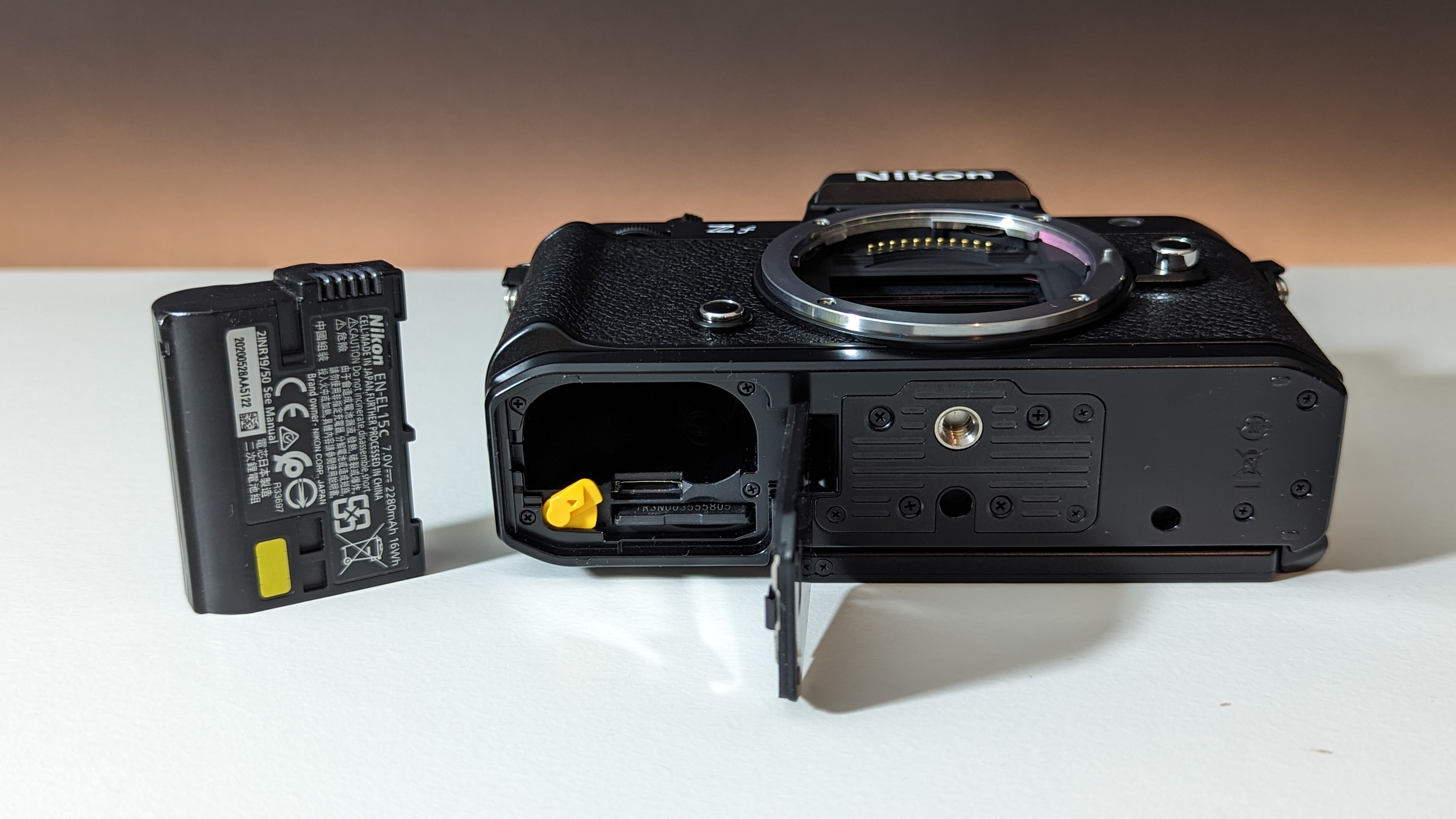
- Hard to think of anything that it lacks
- Hot shoe on top makes it practical for studio and off-camera flash work
- B&W mode on the dial is great for those concentrating on tonality
For the users that this camera is designed for, it's really hard to figure out what else we would add to make it more appealing. Maybe the shallow grip could be deeper? But then there's a SmallRig grip adapter to deepen it, so that's covered.
What about if it shot in microSD? Yep, dual card slots means Nikon have thought of that, too.
OK, we could boost the resolution and add a second memory card slot for dual shooting for the pros, but let's face it, they're going to drop some dollar on the Z8 or Z9.
Everything is solid. The dials clunk into place and that's the camera settings set. We can see what's going on, and the touchscreen is excellent too. Maybe we could split hairs and ask for a tilting touchscreen, but then we might lose the ability to fully articulate it, which is good for video and selfies.
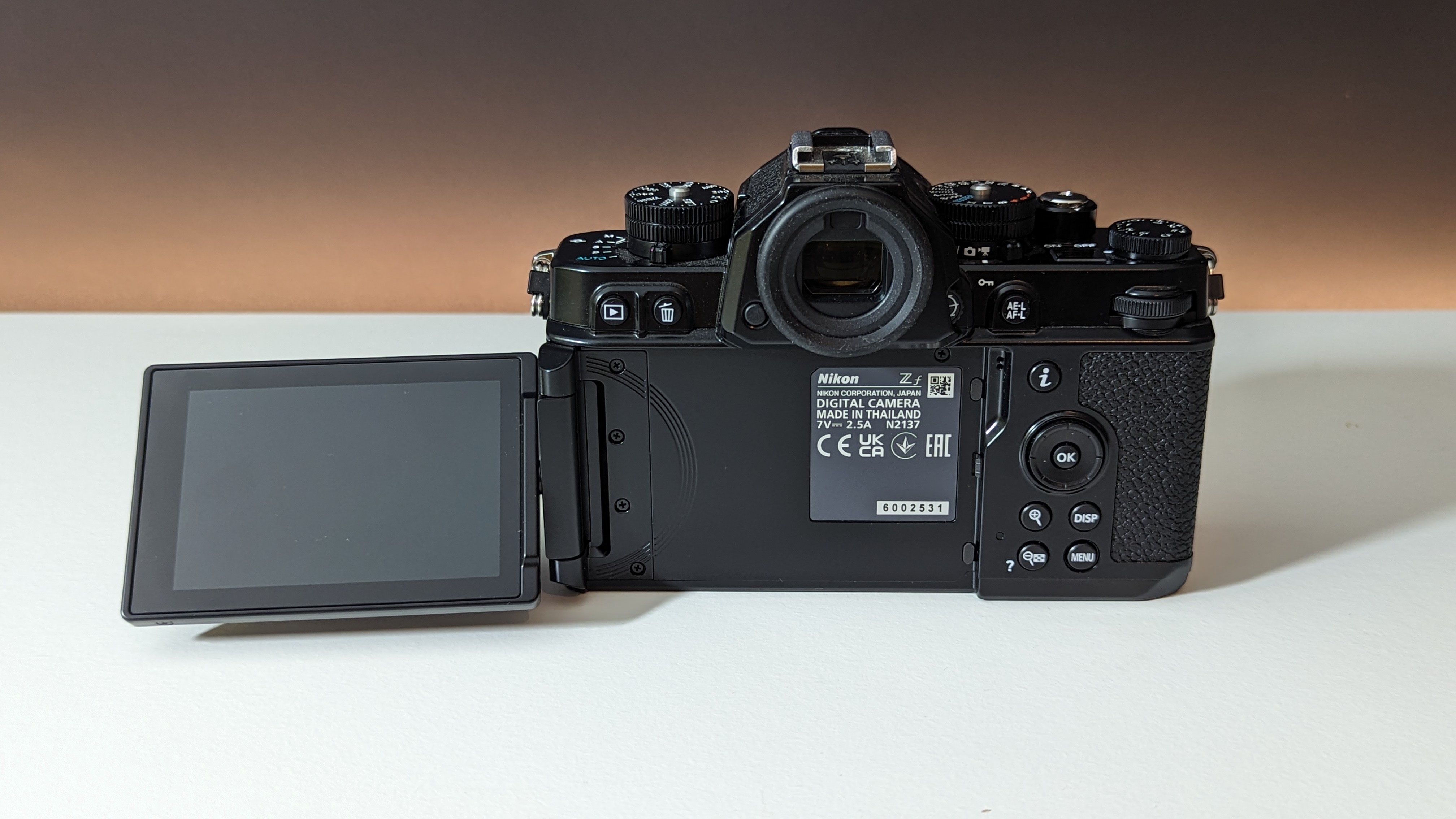
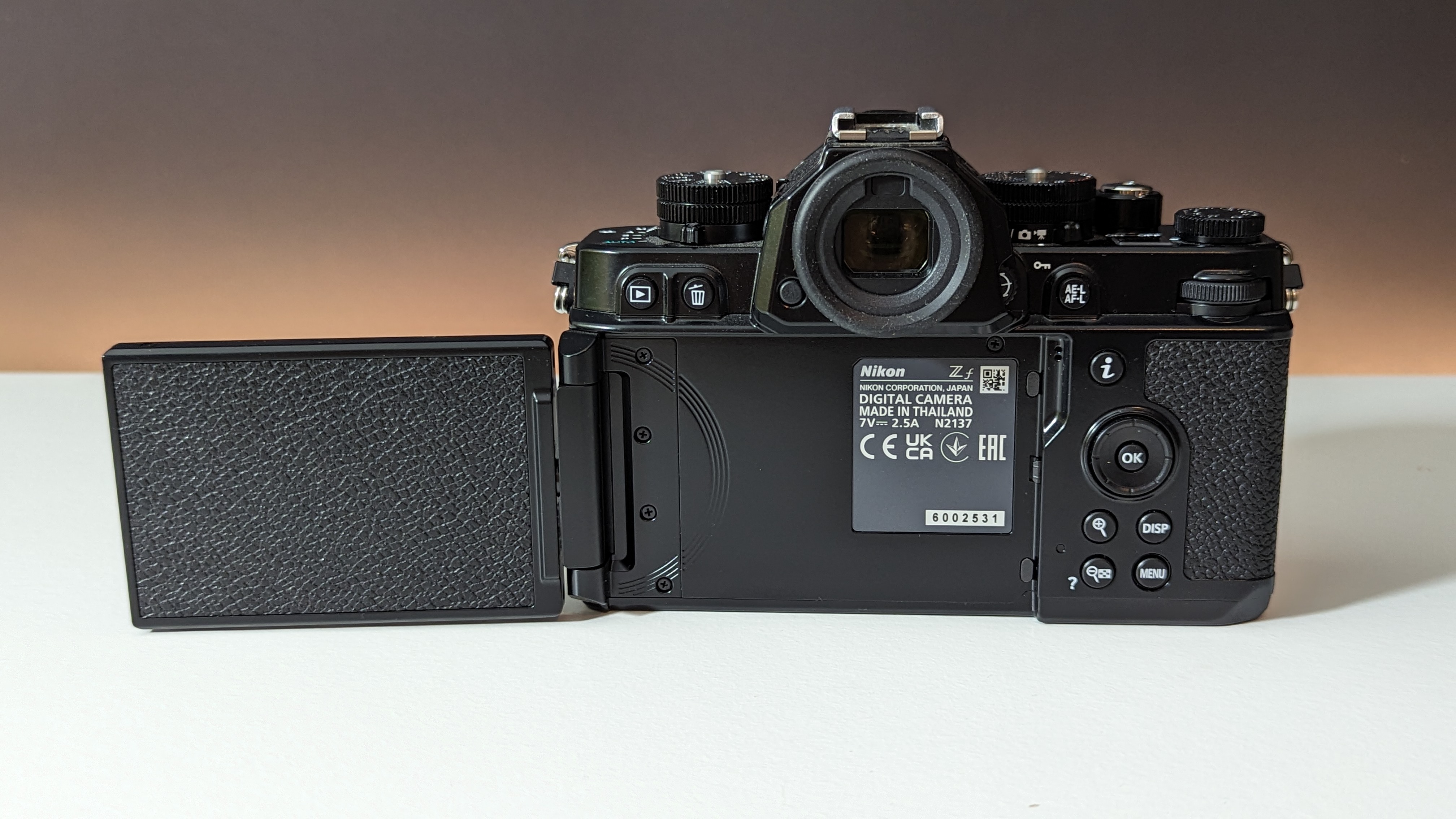
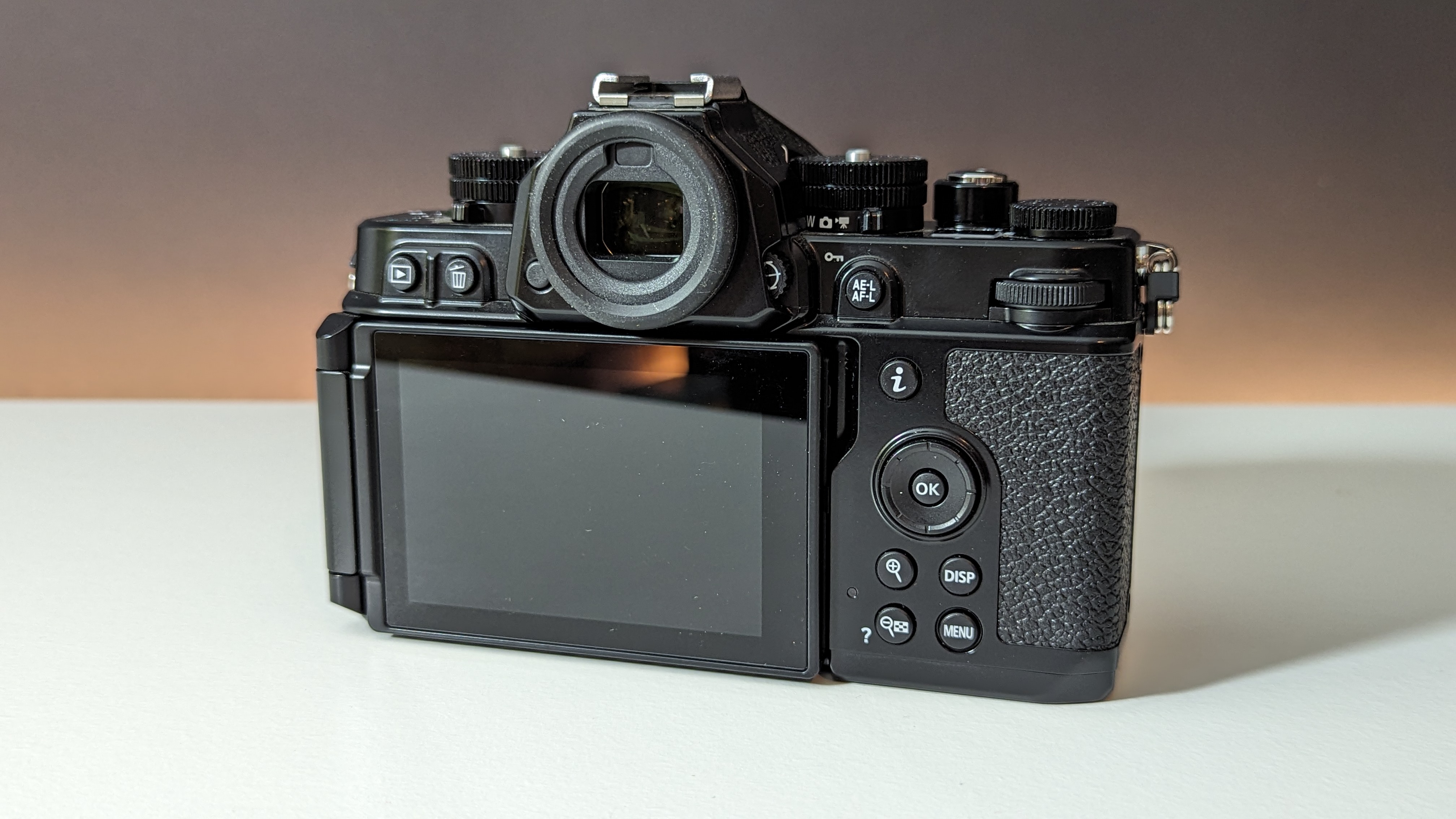
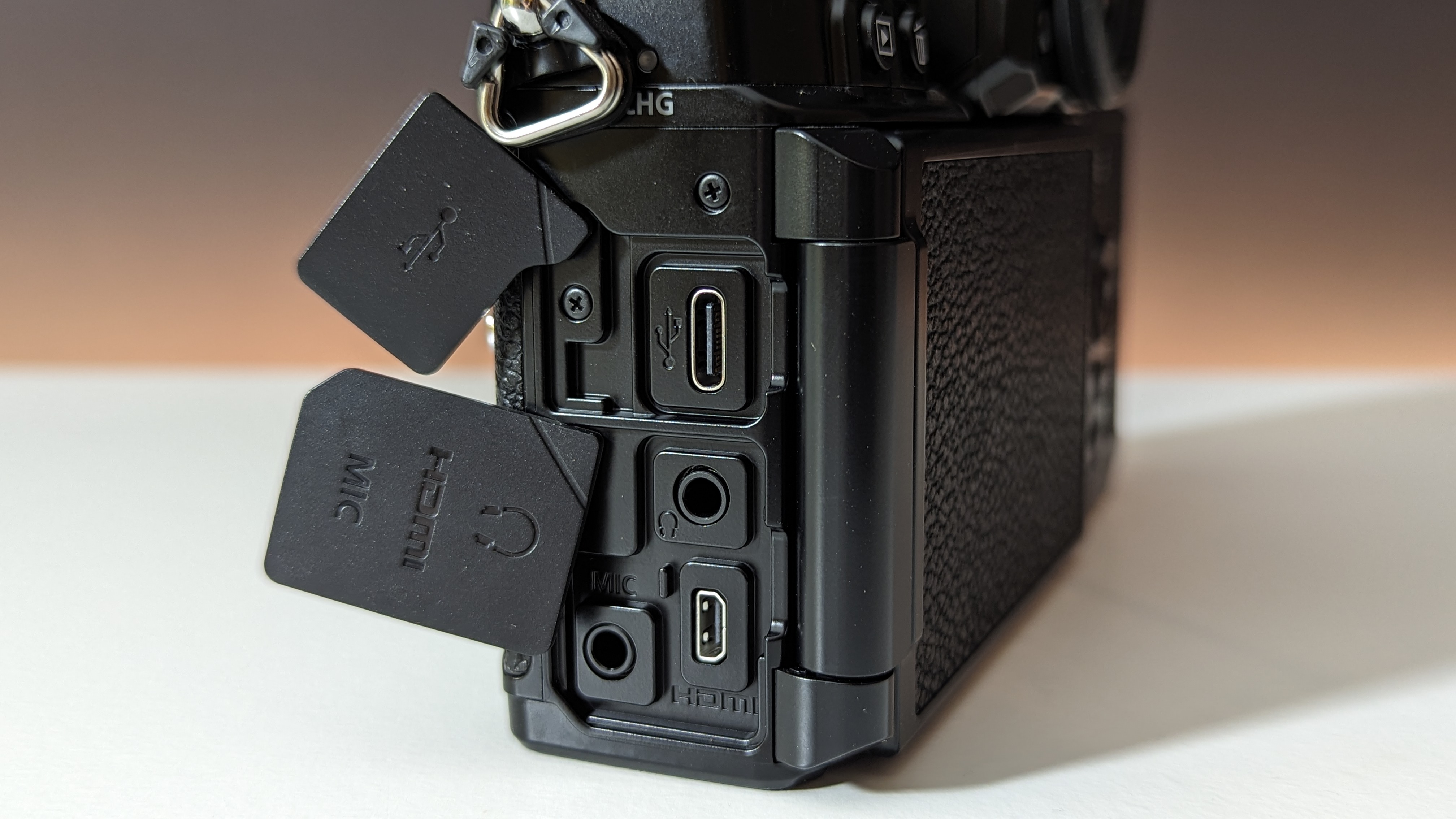
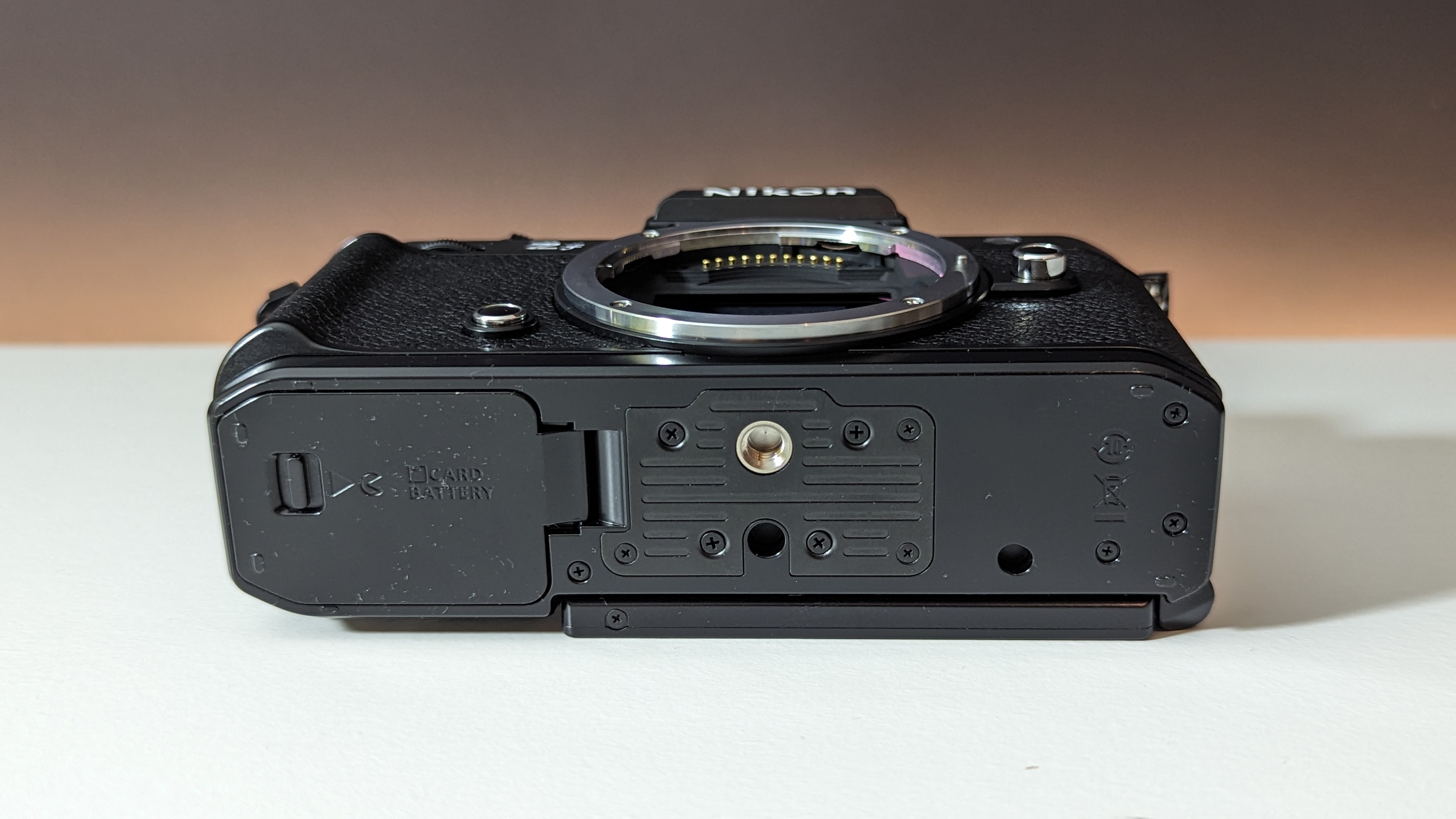
It is a little frustrating that we have to fold out the touchscreen to take high- and low-angle shots, and we know from talking to some of our pro photographer friends that they prefer a tilting screen that doesn't fold fully out, because they're a little rough and ready with their gear and have broken a few screens in their time. But for everyone else, this isn't really an issue.
Should you buy the Nikon Zf?
As a full-frame mirrorless camera with all these specs and performance tucked away inside a stylish and immaculately designed exterior, we'd happily recommend the Zf to friends, family and photographers who love the retro feel.
If you're a pixel peeper and only care about the pure specifications, you may find the maximum image and video resolution and compatibility a little limiting. It'll create images and videos that can be displayed on big posters and the big screen, but it's not a cutting-edge spec designed for those that want to go pro.
The real take-home about this camera is that it effortlessly blends beauty and brawn. It looks good, it shoots well and it's got just enough oomph to land some truly stunning images without compromise.
Add that to the unrivalled low-light performance and we think it's a steal for under $2,000.
If this product isn't for you
Not every photographer will need the aesthetic stylings of the Nikon Zf, and for those that want to stick with the company we'd recommend spending more and opting for the Nikon Z8 if your budget stretches to it — though this really only appeals to amateurs with deep pockets and working professionals.
The Nikon Z9 is the flagship model in Nikon's Z mirrorless line-up but again is only suited to professionals, and specifically those that need to shoot sports and fast-paced action or wildlife.
Want to keep the vintage stylings but spend around half as much? Then the Nikon Zfc may be the right option for you. It has those satisfying dials and switches but it jumps down in terms of performance too, with an APS-C crop sensor body. However, that crop sensor means a 1.5x magnification so telephoto lenses will look like they reach further — great for the bird and aviation photography enjoyed by many hobbyists at this price range.
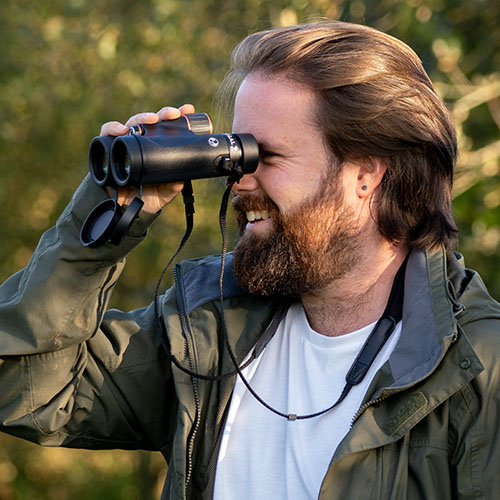
Jase Parnell-Brookes is the Managing Editor for e-commerce for Live Science and Space. Previously the Channel Editor for Cameras and Skywatching at Space, Jase has been an editor and contributing expert across a wide range of publications since 2010. Based in the UK, they are also an award-winning photographer and educator winning the Gold Prize award in the Nikon Photo Contest 2018/19 and named Digital Photographer of the Year in 2014. After completing their Master's degree in 2011 and qualifying as a teacher in 2012, Jase has spent the last two decades studying and working in photography and publishing in multiple areas, and specializes in low light optics and camera systems.
